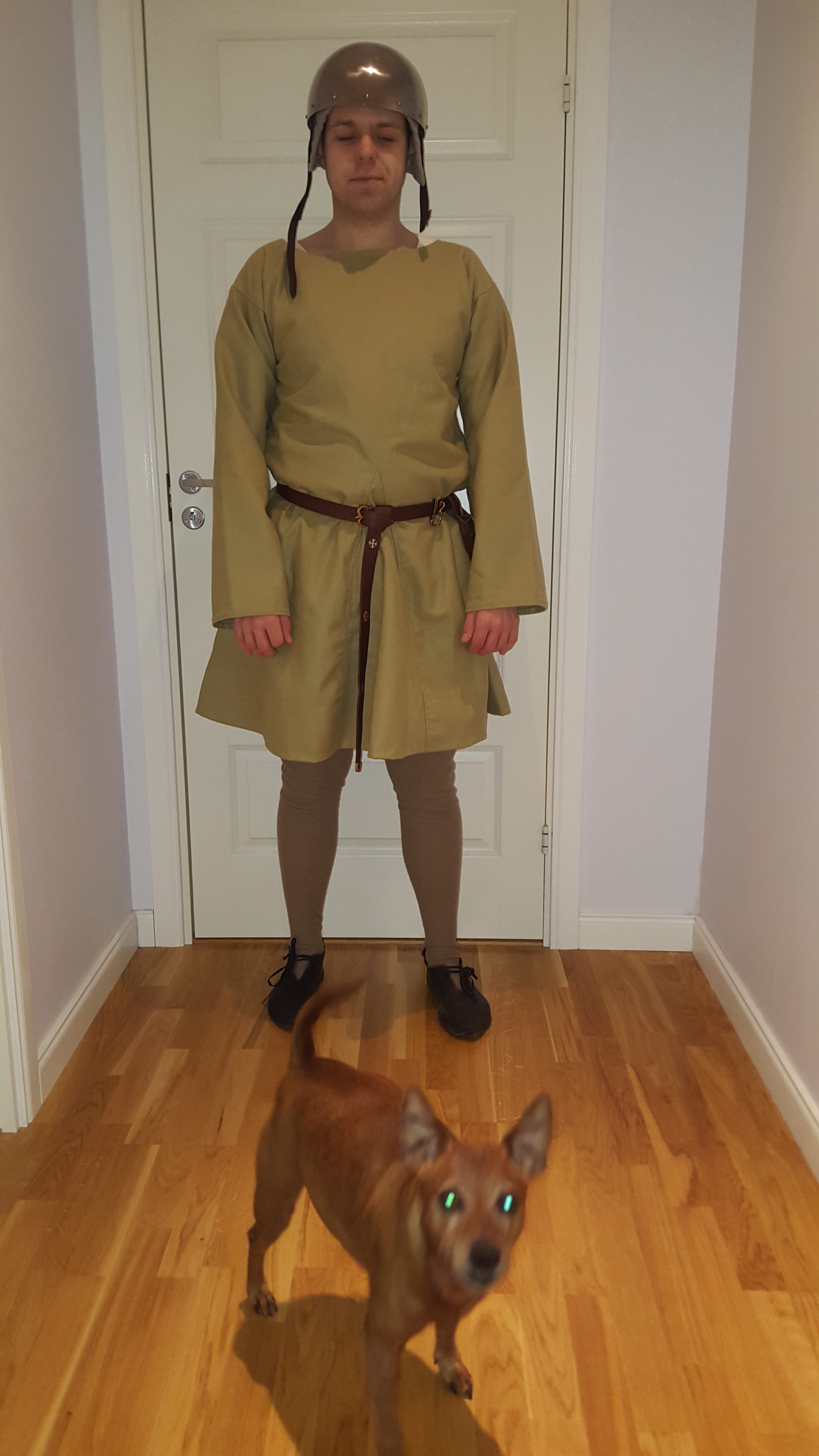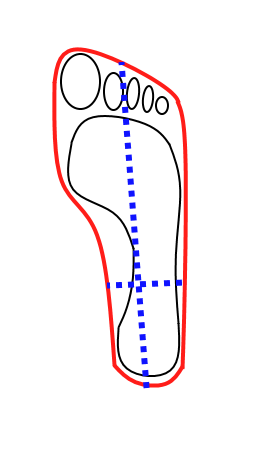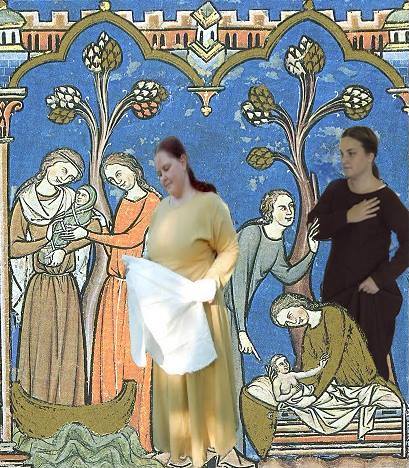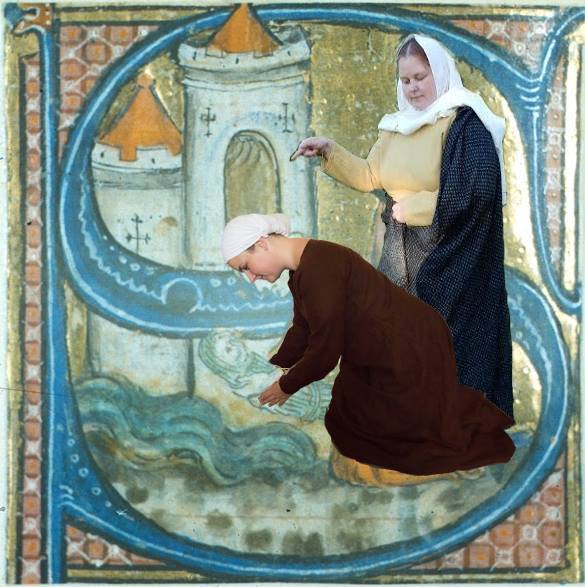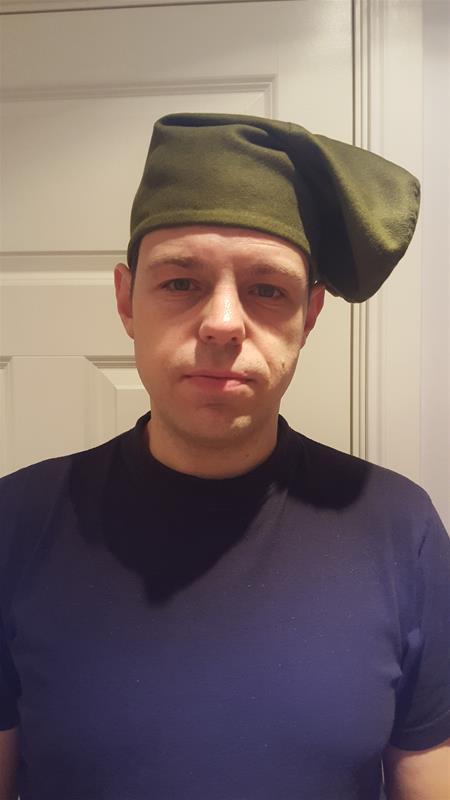Today I were at a sew-date at another medievalist and finished the last hose.
I’ve gotten a cry for help a couple of days ago, so I ’m sewing a complete outfit for a friend now and this blogpost has been kept on ice for a while because of that.
* * * * * * * * * * * * * * * * * * * * * *
I dag var jag på en sydejt hos en annan medeltidare och sydde klart sista hosan.
Eftersom jag fick ett rop på hjälp för ett par dagar sedan och nu håller på att sy en komplett outfit till en vän så har den här bloggposten fått ligga på is ett tag.
* * * * * * * * * * * * * * * * * * * * * *
* * * * * * * * * * * * * * * * * * * * * *
I decided to line the hose with a strip of linnen fabric, just to make them a bit sturdier as the last ones I made stretched out a bit and is now a bit loose around the thigh.
And since I wanted to strengthen the hose at the front tip, i decided to make the linnen strips overlap there.
You can either use one long strip or two shorter and join them in the back of the hose (in line with the back seam). I used to shorter strips.
So first, start by cutting or tearing the strips in the with and length you want. Then fold the seam allowance in and make it flat by running your nails along the fold.
Press down the edge of the wollen hose so it will be easier to sew them together.
Then start to pin it in place if you feel that you need to do that, and just sew it in place with a seam of your choice. I used an overcasting seam.
* * * * * * * * * * * * * * * * * * * * * *
Jag bestämde mig för att stärka upp hosorna med en remsa av linnetyg denna gången för att göra dom lite stadigare. Dom förra jag gjorde sträcktes ut lite runt låren och är nu lite lösa där.
Och eftersom jag också ville stärka upp runt den främre spetsen så valde jag att lägga remsorna omlott där.
Du kan göra en lång remsa som går hela vägen runt eller två kortare och skarva mitt bak.
Jag använde två kortare.
Så, börja med att klippa eller riva linneremsorna till den bredd och längd du önskar. Sen viker du in sömsmånen och drar med nageln över den vikta kanten tills du har plattat till det.
Pressa ner kanten / fållen på yllehosan så blir det lättare att sy ihop delarna.
Sen nålar du fast remsan om du känner att du behöver det, och sy ihop dom med valfri söm. Jag har valt en överkastande söm här.

When you sewn all around the edge of the hose, you can do the same with the inner edge of the linnen strip.
* * * * * * * * * * * * * * * * * * * * * *
När du har sytt hela vägen runt ytterkanten så gör du samma sak på andra sidan av linneremsan.

This stitch have I used several times before, so you should know it by now 
* * * * * * * * * * * * * * * * * * * * * *
Det här stygnet har jag använt flera gånger tidigare, så du borde känna igen det nu 
* * * * * * * * * * * * * * * * * * * * * *
When you have sewn the linnen strip in place, you now have to make two lacing holes to be able to tie the hose to your linnen braies.
I use one of these, i don’t know the word for it in English, but if you don’t have one or cant find one, you can use an knitting needle or anything else with this shape.
Because if you pry apart the threads in the fabric to do the lacing holes, it will be a lot stronger than if you cut a hole.
* * * * * * * * * * * * * * * * * * * * * *
När du har sytt fast linneremsan så är det dags att göra två snörhål i varje hosa så att du kan knyta fast dom i brokorna.
Jag använder en sån här (en pryl) men man kan även använda en strumpsticka eller något annat med liknande form. Anledningen är för att om du bänder isär trådarna i tyget så får du ett mycket starkare snörhål än om du klipper upp ett hål.

Prey the threads apart until you have a big enough hole, you will have to repeat this a couple of times while sewing the lacing hole as it will shrink otherwise.
* * * * * * * * * * * * * * * * * * * * * *
Bänd isär trådarna tills du har ett tillräckligt stort hål, detta kommer du behöva upprepa några gånger medan du syr också eftersom det annars kommer att krympa ihop igen.

Use buttonhole stitches to sew around the hole.
There is quite a lot of tutorials on buttonhole stitches. You can explain these in several ways, and I will explain my way here. But if you don’t understand my way, try some one elses 
The important thing is to get kind of a knot on the thread that will end up at the edge of the hole. This will make it more durable.
* * * * * * * * * * * * * * * * * * * * * *
Använd knapphålsstygn för att sy runt hålet.
Det finns en hel del tutorials på knapphålsstygn. Man kan förklara dom på flera olika sätt, och jag kommer försöka förklara på mitt sätt här. Men om du inte förstår mitt sätt, så prova någon annans 
Det viktigaste är att få en sorts knut på tråden i kanten av hålet. Det gör sömmen mer motståndskraftig mot slitage.
* * * * * * * * * * * * * * * * * * * * * *
* * * * * * * * * * * * * * * * * * * * * *
I sew my button holes and lacing holes from the backside. They usually gets prettier that way.
So put the needle trough the fabric, then up in the hole at the left of where the thread last came trough the fabric (the left of the last stitch).
Then put the thread in front of the needle in a loop that then goes on the back of the needle.
* * * * * * * * * * * * * * * * * * * * * *
Jag syr mina knapphål och snörhål från baksidan, dom brukar bli finare på så sätt.
Så nålen ska gå genom tyget och sen upp genom hålet. Du syr åt vänster så att du alltså tar nästa stygn till vänster om senaste stygnet.
Sen låter du tråden gå framför nålen och i en båge runt och bakom nålen.

When you pull the needle trough, you should get a loop that looks like this.
* * * * * * * * * * * * * * * * * * * * * *
När du drar igenom nålen nu så bör du få en ögla som ser ut såhär.


See how it twists around the thread?
That will make a knot. Try to place the knot on the inner edge of the hole.
Don’t forget to use your tool to keep the size of the hole.
* * * * * * * * * * * * * * * * * * * * * *
Ser du hur den vrider sig runt tråden?
Det kommer bilda en knut. Försök placera knuten på innerkanten av hålet.
Glöm inte att använda prylen för att se till att du håller storleken på hålet.
* * * * * * * * * * * * * * * * * * * * * *
* * * * * * * * * * * * * * * * * * * * * *
This is how a finished hole should look like from the inside and outside.
* * * * * * * * * * * * * * * * * * * * * *
Så här ska ett färdigt hål se ut från både fram och baksida.


And here is the finished result 
* * * * * * * * * * * * * * * * * * * * * *
Och så här blev resultatet 
